Indoor Mint Growing: Unlock the secrets to a fragrant, fresh, and flavorful herb garden right inside your home! Have you ever craved a refreshing mojito or a soothing cup of mint tea, only to realize you’re out of fresh mint? I know I have! That’s where the magic of growing mint indoors comes in. It’s not just about convenience; it’s about bringing a touch of nature, a burst of aroma, and a dash of culinary creativity into your everyday life.
Mint has a rich history, dating back to ancient civilizations where it was valued for its medicinal and culinary properties. The Romans, for example, used mint to freshen their breath and flavor their sauces. Today, this versatile herb is a staple in kitchens and gardens worldwide. But let’s face it, not everyone has the space or the time for a sprawling outdoor garden. That’s why mastering the art of indoor mint growing is a game-changer.
This DIY guide is your passport to a thriving indoor mint patch. I’ll share simple, effective tricks and hacks that will help you cultivate healthy, vibrant mint plants, even if you’re a complete beginner. Forget about those sad, wilted supermarket mint sprigs. With a little know-how, you can enjoy a constant supply of fresh mint, ready to elevate your dishes, drinks, and even your home’s ambiance. Let’s get started and transform your space into a minty paradise!
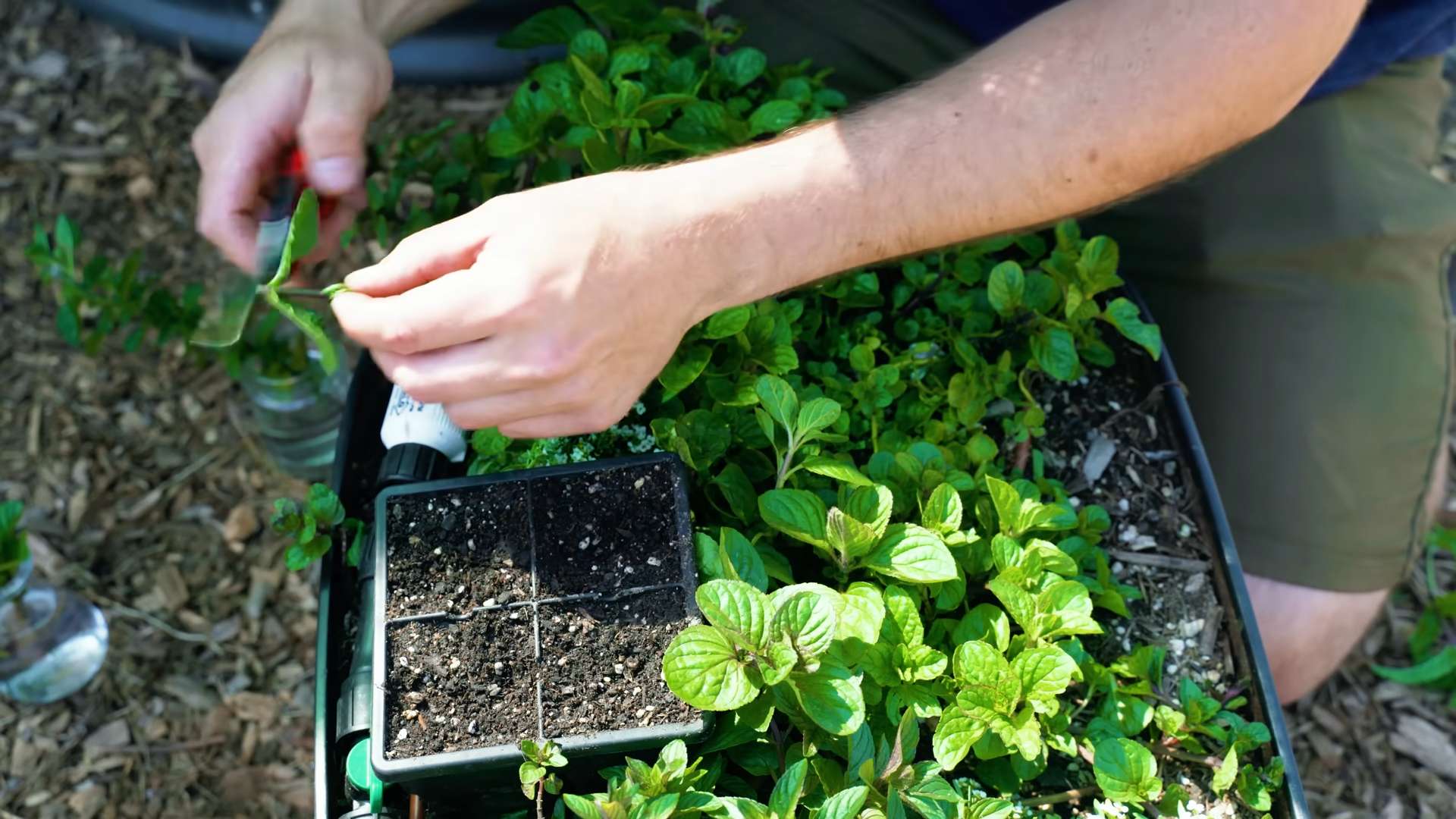
Growing Mint Indoors: A Beginner’s Guide to Fresh Flavor Year-Round
Hey there, fellow herb enthusiasts! I’m so excited to share my secrets to growing vibrant, fragrant mint right inside your home. Forget those sad, wilted bunches from the grocery store – with a little know-how, you can have a constant supply of fresh mint for teas, cocktails, cooking, and even just to enjoy the amazing aroma. Let’s dive in!
Choosing the Right Mint Variety
First things first, let’s talk about mint varieties. There are tons of options, each with its own unique flavor profile. Some popular choices for indoor growing include:
* Spearmint: This is your classic mint flavor, perfect for mojitos and teas. It’s generally easy to grow.
* Peppermint: A bolder, more intense flavor, great for desserts and candies. It can be a bit more demanding than spearmint.
* Chocolate Mint: Yes, you read that right! It has a subtle chocolatey undertone that’s delicious in desserts and drinks.
* Apple Mint: A milder, fruitier flavor that’s lovely in salads and teas.
* Orange Mint: A citrusy twist on the classic mint flavor, perfect for adding a bright note to your dishes.
I personally love having a mix of spearmint and chocolate mint on hand. Experiment and see which varieties you enjoy the most!
Essential Supplies You’ll Need
Before we get started, let’s gather our supplies. You’ll need:
* Mint cuttings or a small mint plant: You can get cuttings from a friend, a local nursery, or even propagate them from store-bought mint (more on that later!).
* A pot with drainage holes: Choose a pot that’s at least 6 inches in diameter to give your mint room to grow.
* Well-draining potting mix: Avoid using garden soil, as it can become compacted and doesn’t drain well in pots. A good quality potting mix is essential.
* Watering can or spray bottle: For keeping your mint consistently moist.
* A sunny windowsill or grow light: Mint needs plenty of light to thrive.
* Optional: Liquid fertilizer: A balanced liquid fertilizer can help boost growth, but it’s not strictly necessary.
* Optional: Pruning shears or scissors: For harvesting and keeping your mint tidy.
Propagating Mint from Cuttings (If You Don’t Have a Plant)
If you’re starting from cuttings, here’s how to get them rooted:
1. Select healthy stems: Choose stems that are about 4-6 inches long and have several leaves.
2. Remove the lower leaves: Strip off the leaves from the bottom 2 inches of the stem. This is where the roots will grow.
3. Place the cuttings in water: Put the cuttings in a glass or jar filled with water, making sure the bottom nodes (where the leaves were removed) are submerged.
4. Wait for roots to develop: Place the jar in a bright, indirect light location. Change the water every few days to keep it fresh. You should see roots starting to grow within a week or two.
5. Plant the rooted cuttings: Once the roots are about an inch long, you can plant the cuttings in your prepared pot with potting mix.
Planting Your Mint
Whether you’re starting with a small plant or rooted cuttings, the planting process is the same:
1. Fill the pot with potting mix: Leave about an inch of space at the top of the pot.
2. Create a hole in the center: Make a hole large enough to accommodate the root ball of your plant or the roots of your cuttings.
3. Gently place the plant or cuttings in the hole: Make sure the top of the root ball is level with the soil surface.
4. Fill in around the plant with potting mix: Gently pat the soil down to secure the plant.
5. Water thoroughly: Water the soil until it’s evenly moist, but not soggy.
Caring for Your Indoor Mint
Now comes the fun part – keeping your mint happy and healthy! Here’s what you need to know:
* Light: Mint needs at least 6 hours of sunlight per day. A sunny windowsill is ideal, but if you don’t have one, you can use a grow light.
* Watering: Keep the soil consistently moist, but not waterlogged. Water when the top inch of soil feels dry to the touch. Overwatering can lead to root rot.
* Humidity: Mint prefers slightly humid conditions. If your home is dry, you can increase humidity by misting the leaves regularly or placing the pot on a tray filled with pebbles and water.
* Fertilizing: Feed your mint with a balanced liquid fertilizer every 2-4 weeks during the growing season (spring and summer). Follow the instructions on the fertilizer label.
* Pruning: Regular pruning is essential for keeping your mint bushy and productive. Pinch off the top leaves of the stems to encourage branching. You can also harvest stems as needed for cooking and other uses.
* Pest control: Keep an eye out for pests like aphids and spider mites. If you spot any, you can try washing them off with a strong stream of water or using an insecticidal soap.
* Repotting: Mint grows quickly, so you may need to repot it into a larger container every year or two. Choose a pot that’s a few inches larger in diameter than the current one.
Harvesting Your Mint
Harvesting mint is easy! Simply snip off stems as needed, using pruning shears or scissors. The more you harvest, the more your mint will grow. It’s best to harvest in the morning, when the essential oils are most concentrated.
Troubleshooting Common Problems
Even with the best care, you might encounter some problems with your indoor mint. Here are a few common issues and how to fix them:
* Yellowing leaves: This could be a sign of overwatering, underwatering, or nutrient deficiency. Check the soil moisture and adjust your watering accordingly. If the soil is dry, water thoroughly. If it’s soggy, let it dry out before watering again. You can also try fertilizing your mint with a balanced liquid fertilizer.
* Leggy growth: This means your mint isn’t getting enough light. Move it to a sunnier location or supplement with a grow light.
* Pests: As mentioned earlier, aphids and spider mites are common pests of mint. Wash them off with water or use an insecticidal soap.
* Root rot: This is caused by overwatering. Make sure your pot has drainage holes and that you’re not watering too frequently. If you suspect root rot, you may need to repot your mint into fresh potting mix.
Preventing Mint from Taking Over
Mint is notorious for being invasive, but don’t let that scare you away from growing it indoors! Because it’s in a pot, you’ve already contained it. Just be sure to keep it pruned and don’t let it spread outside of its container.
Enjoying Your Fresh Mint
Now for the best part – using your homegrown mint! Here are just a few ideas:
* Make mint tea: Steep fresh mint leaves in hot water for a refreshing and soothing beverage.
* Add it to cocktails: Mint is a classic ingredient in mojitos, mint juleps, and other cocktails.
* Use it in cooking: Mint can add a fresh, vibrant flavor to salads, sauces, and desserts.
* Garnish your dishes: A sprig of mint can add a touch of elegance to any plate.
* Make mint-infused water: Add mint leaves to a pitcher of water for a refreshing and healthy drink.
* Dry your mint: Preserve your mint by drying it for later use. Simply hang the stems upside down in a cool, dry place until they’re completely dry.
Growing mint indoors is a rewarding experience that will provide you with a constant supply of fresh flavor. With a little care and attention, you can enjoy the benefits of homegrown mint year-round. Happy growing!
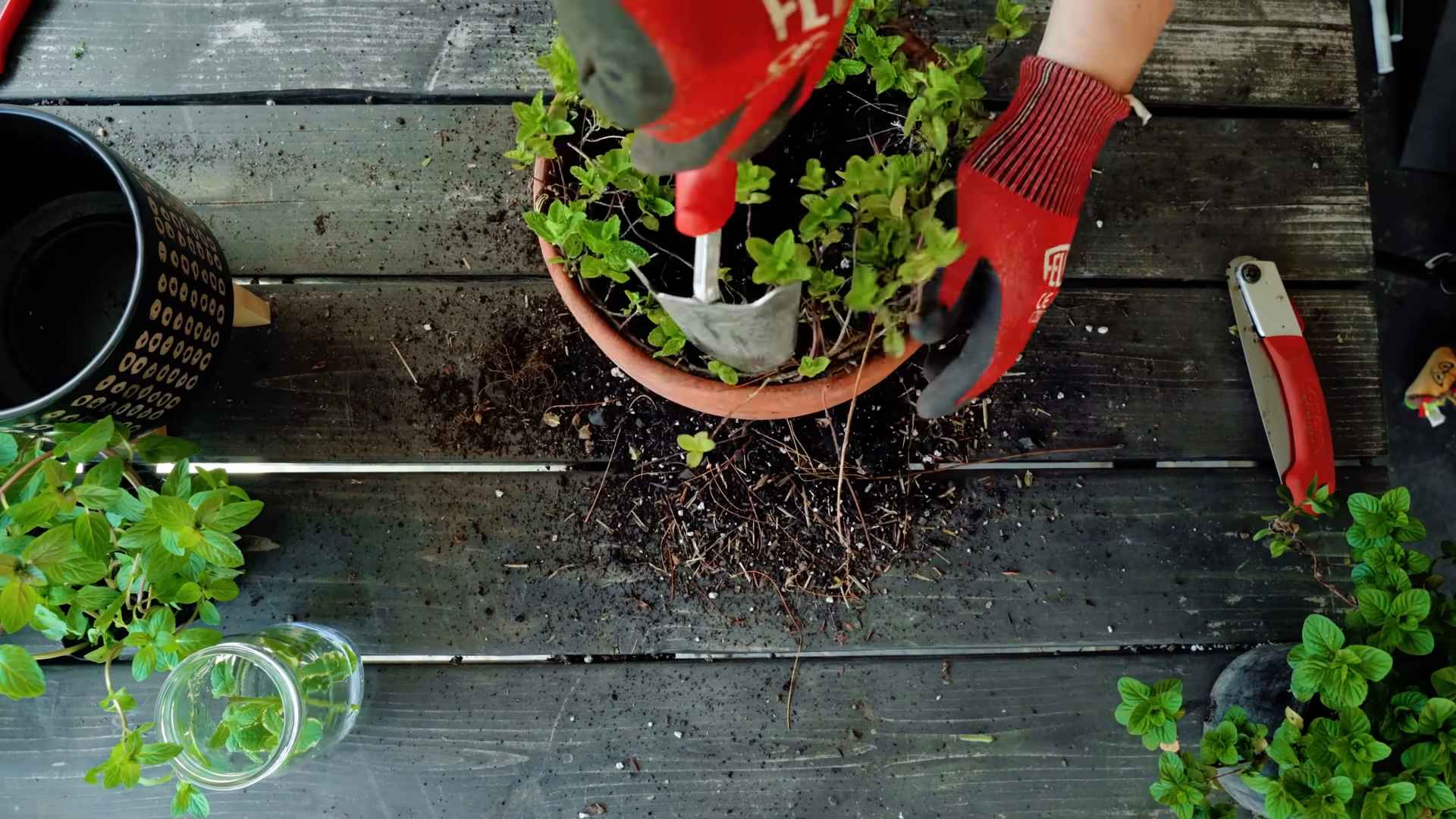
Conclusion
So, there you have it! Mastering the art of indoor mint growing is not only achievable but also incredibly rewarding. We’ve walked through the simple steps, from selecting the right container and soil to providing adequate light and water, and even troubleshooting common issues. But why is this DIY trick a must-try?
Firstly, imagine the sheer convenience of having fresh, aromatic mint readily available at your fingertips. No more last-minute trips to the grocery store or settling for wilted, lackluster leaves. Whether you’re whipping up a refreshing mojito, garnishing a summer salad, or brewing a soothing cup of mint tea, the possibilities are endless. The vibrant flavor of homegrown mint is simply unmatched.
Secondly, growing mint indoors is a fantastic way to bring a touch of nature into your home, especially if you lack outdoor space. The lush green foliage adds a pop of color and vitality to any room, creating a calming and inviting atmosphere. It’s a small but significant way to connect with the natural world, even in the heart of the city.
Thirdly, and perhaps most importantly, cultivating your own mint is a sustainable and cost-effective choice. You’ll reduce your reliance on commercially grown herbs, which often come with a hefty price tag and a significant environmental footprint. Plus, once your mint plant is established, it will continue to produce fresh leaves for months, even years, to come.
Now, let’s talk about variations. While we’ve focused on growing common mint varieties like spearmint and peppermint, don’t be afraid to experiment with other types, such as chocolate mint, orange mint, or even pineapple mint. Each variety offers a unique flavor profile that can add a delightful twist to your culinary creations. You can also try growing your mint in different types of containers, from terracotta pots to repurposed jars, to create a visually appealing display. Consider using a self-watering planter to simplify the watering process, especially if you tend to forget.
Another fun variation is to propagate your mint plant and share it with friends and family. Mint is incredibly easy to propagate from cuttings, so you can quickly multiply your supply and spread the joy of homegrown herbs. Simply snip off a few stems, place them in water until roots develop, and then plant them in soil.
We encourage you to embrace this DIY project and experience the satisfaction of growing your own mint indoors. It’s a simple, rewarding, and sustainable way to enhance your culinary adventures and bring a touch of nature into your home.
Don’t hesitate to experiment, adapt the techniques to your specific environment, and most importantly, have fun! We’re confident that you’ll be amazed by the abundance of fresh, flavorful mint that you can harvest from your own indoor garden.
Finally, we’d love to hear about your experiences! Share your tips, tricks, and photos of your indoor mint gardens in the comments below. Let’s create a community of indoor herb enthusiasts and inspire others to embark on this rewarding journey. Happy growing!
FAQ
Q: What is the best location for growing mint indoors?
A: The ideal location for your indoor mint plant is a spot that receives at least 4-6 hours of bright, indirect sunlight per day. A south-facing window is often a good choice, but if you don’t have one, an east- or west-facing window can also work. If you’re struggling to provide enough natural light, consider supplementing with a grow light. Place the grow light about 6-12 inches above the plant and keep it on for 12-14 hours per day. Remember to rotate your mint plant regularly to ensure that all sides receive adequate light.
Q: What type of soil should I use for growing mint indoors?
A: Mint thrives in well-draining soil that is rich in organic matter. A good potting mix specifically formulated for herbs is an excellent choice. You can also create your own potting mix by combining equal parts of potting soil, perlite, and compost. Perlite helps to improve drainage, while compost provides essential nutrients. Avoid using garden soil, as it can be too heavy and may contain pests or diseases.
Q: How often should I water my indoor mint plant?
A: Water your mint plant when the top inch of soil feels dry to the touch. Avoid overwatering, as this can lead to root rot. When you water, water thoroughly until water drains out of the bottom of the pot. Be sure to empty the saucer beneath the pot to prevent the plant from sitting in water. During the warmer months, you may need to water more frequently than during the cooler months.
Q: How do I fertilize my indoor mint plant?
A: Mint is a relatively light feeder, so you don’t need to fertilize it too often. A balanced liquid fertilizer diluted to half strength can be applied every 2-4 weeks during the growing season (spring and summer). Avoid fertilizing during the dormant season (fall and winter). Organic fertilizers, such as compost tea or fish emulsion, are also excellent choices.
Q: How do I prune my indoor mint plant?
A: Regular pruning is essential for keeping your mint plant healthy and productive. Pinch off the tips of the stems regularly to encourage bushier growth. You can also harvest leaves as needed for culinary use. If your mint plant starts to become leggy or overgrown, you can prune it back more aggressively. Don’t be afraid to cut it back by as much as half its size. Mint is a resilient plant and will quickly bounce back.
Q: How do I prevent pests and diseases from affecting my indoor mint plant?
A: While mint is generally pest-resistant, it can occasionally be affected by aphids, spider mites, or whiteflies. Inspect your plant regularly for signs of infestation. If you notice any pests, you can try washing them off with a strong stream of water or using insecticidal soap. Avoid using harsh chemicals, as they can damage the plant. Good air circulation can also help to prevent pest and disease problems. Ensure that your mint plant is not overcrowded and that there is adequate space between the leaves.
Q: Can I grow different varieties of mint together in the same pot?
A: It’s generally not recommended to grow different varieties of mint together in the same pot, as they can cross-pollinate and lose their distinct flavors. Mint is also a vigorous grower and can quickly spread and overtake other plants. If you want to grow multiple varieties of mint, it’s best to keep them in separate containers.
Q: My mint plant is turning yellow. What could be the problem?
A: Yellowing leaves can be a sign of several problems, including overwatering, underwatering, nutrient deficiency, or pest infestation. Check the soil moisture to determine if you’re watering too much or too little. If the soil is consistently wet, you may be overwatering. If the soil is dry, you may need to water more frequently. If you suspect a nutrient deficiency, try fertilizing your plant with a balanced liquid fertilizer. Inspect your plant for pests and treat accordingly.
Q: How do I propagate mint from cuttings?
A: Propagating mint from cuttings is a simple and effective way to multiply your supply. Take a 4-6 inch cutting from a healthy stem, removing the lower leaves. Place the cutting in a glass of water, making sure that the leaves are above the water line. Change the water every few days. Within a week or two, roots should start to develop. Once the roots are about an inch long, you can plant the cutting in a pot filled with well-draining potting mix. Keep the soil moist until the plant is established.

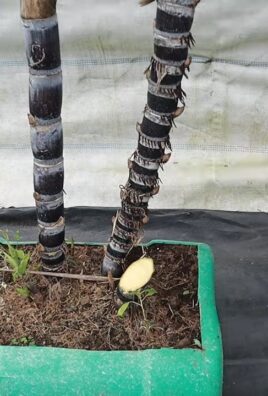
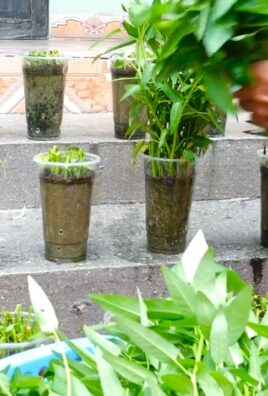
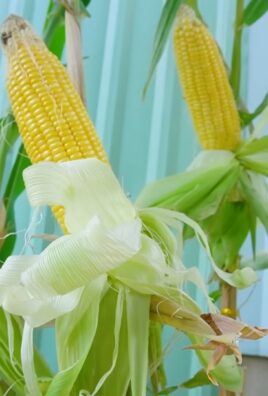
Leave a Comment